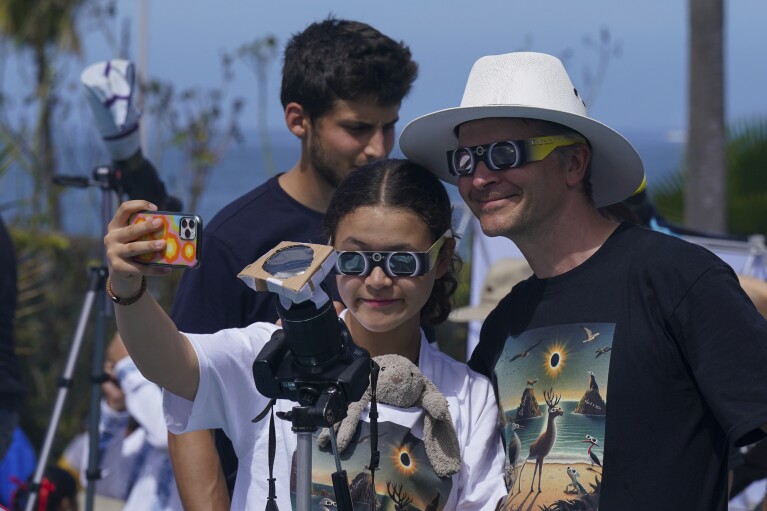Following the total solar eclipse experienced by many U.S. communities, an upsurge in Google searches about “hurt eyes” emerged on Monday afternoon. These searches indicate that some individuals within the path of the sun were concerned they may have stared at it for too long.
Eye experts have confirmed this to be a valid concern. Directly looking at the sun without adequate protection can indeed cause harm to one’s vision, and instances of eye discomfort have been reported following previous eclipse events. However, cases of long-term damage resulting from eclipses are not common.
Furthermore, experiencing eye discomfort isn’t necessarily indicative of a severe problem. Injuries from “solar retinopathy,” where light causes damage to the retinas, can occur without immediate pain.
There are two main types of injuries that can result from gazing at the sun: burns to the outer eye and damage to the nerve tissue within. Dr. Daniel Lattin, an ophthalmologist at Nemours Children’s Health in Jacksonville, Florida, explains that superficial burns to the cornea, known as solar keratitis, may cause symptoms like redness and tearing, but typically resolve without permanent damage within a day or two.
Such injuries are rare, more commonly associated with climbers at high altitudes without proper eye protection, notes Dr. Russell Van Gelder, an ophthalmologist at University of Washington Medicine. He mentions that prolonged exposure is necessary for eclipse gazing and vision symptoms are more concerning.

Dr. Luxme Hariharan, chief of ophthalmology at Dayton Children’s Hospital in Ohio, advises seeking immediate medical attention if experiencing symptoms such as blind spots, wavy lines, floaters, or blurry vision after an eclipse, as these could indicate solar retinopathy. Symptoms typically manifest within 24 hours after sun exposure and are not associated with pain.
Van Gelder emphasizes that the retina lacks pain sensation, so injury can go unnoticed. Although there’s no specific treatment for solar retinopathy, some patients may experience partial recovery over time.
Limited data suggests eclipse-related retinopathy isn’t common, with about 100 reported cases after the 2017 eclipse, mostly affecting children and young adults. There’s no national registry tracking such injuries.
Van Gelder recommends seeking medical attention for vision issues but notes that pain likely indicates less significant problems. Hariharan warns that even brief, unprotected exposure to the sun can cause eye damage, particularly during a total eclipse when people might mistakenly believe it’s safe to look at the obscured sun for extended periods.
